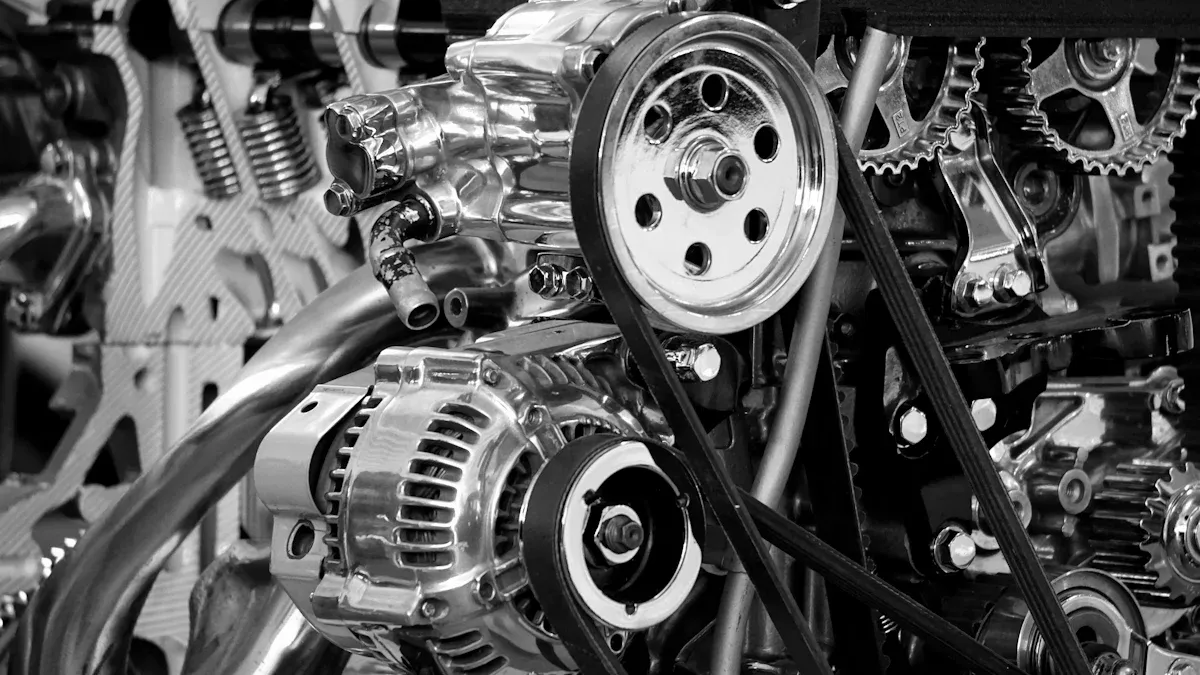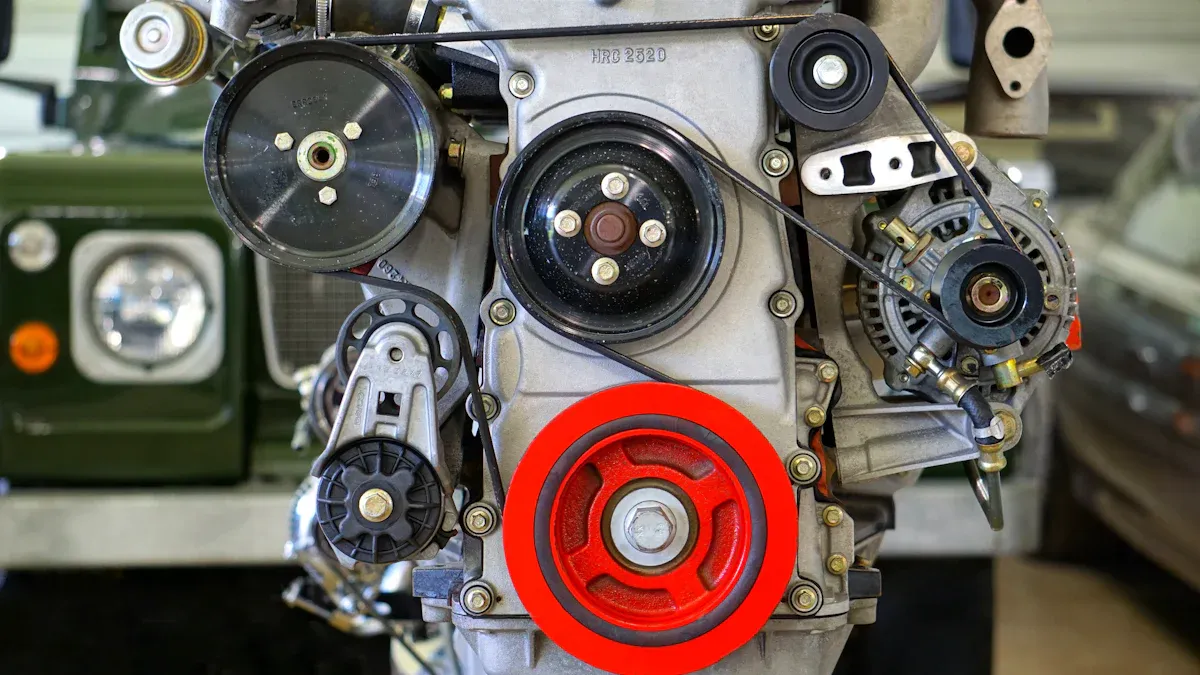
News
Did you know a variable frequency drive for AC motors can help you cut energy costs and improve efficiency? By controlling speed and torque, a VFD reduces power consumption and mechanical stress. For example, it can lower startup current from 600% to 150%, saving energy and extending motor life. Solutions like Canroon VFD or a Chinese Variable Frequency Drive can even save up to 30% of electricity in water systems. With less wear and tear, you’ll also spend less on maintenance.
Key Takeaways
A variable frequency drive (VFD) helps cut energy costs by 20% to 50%. It changes motor speed to match what is needed.
Buying a VFD saves money fast. Many businesses get their money back in under two years.
A VFD makes your motor last longer. It also lowers repair costs by reducing damage over time.
What is a Variable Frequency Drive for AC Motor?

Definition and Purpose of a Variable Frequency Drive
A variable frequency drive (VFD) is an electronic device that controls the speed and torque of an AC motor by adjusting the frequency and voltage of the power it receives. Think of it as an adjustable speed drive that lets you fine-tune how your motor operates. This control helps optimize energy use and improves the motor's efficiency. VFDs are widely used in industries to enhance the performance of induction motors and reduce energy costs.
According to industry standards like NEMA, VFDs also protect motors from electrical damage by using features like insulated or ceramic bearings. These components ensure smooth operation and extend the motor's lifespan.
How a VFD Works: Adjusting Frequency and Voltage
A VFD works by converting the incoming AC power into DC power using a rectifier. Then, a filter capacitor smooths out the DC supply. Finally, an inverter circuit converts the DC back into AC, adjusting the frequency and voltage to control the motor's speed. A microcontroller oversees this entire process, ensuring precise adjustments.
By varying the frequency and voltage, the VFD allows the motor to run at the exact speed needed for the task. This not only saves energy but also reduces wear and tear on the motor.
Benefits of Using a VFD with AC Motors
Using a variable frequency drive with an AC motor offers several advantages:
Energy Efficiency: By matching motor speed to load requirements, VFDs reduce energy consumption.
Cost Savings: Lower energy use translates to significant savings on electricity bills.
Improved Power Factor: VFDs enhance power factor, reducing reactive power and potential utility costs.
Noise Reduction: Slower motor speeds mean quieter operation, creating a more comfortable environment.
Environmental Impact: Reduced energy use lowers your carbon footprint, contributing to sustainability.
With the VFD market projected to grow from USD 28.43 billion in 2024 to USD 47.79 billion by 2033, it's clear that more industries are recognizing these benefits.
How Does a VFD Save Money?
Energy Efficiency: Lowering Power Consumption
A variable frequency drive for AC motor helps you save energy by adjusting motor speed to match the actual demand. This means your motor doesn’t run at full speed when it doesn’t need to. For example, in cooling applications, VFDs can reduce power consumption by up to 35%. In centrifugal operations, energy savings can reach as high as 50%.
Here’s a quick look at how much energy you can save: Up to 50%
By using a VFD, you not only lower your electricity bills but also contribute to a greener planet.
Reduced Maintenance Costs: Minimizing Wear and Tear
VFDs protect your AC motor by offering soft-start and stop capabilities. This reduces the mechanical stress on the motor and connected equipment. Over time, this means fewer repairs and lower maintenance costs. Industries like water treatment have reported a 30% drop in gear failure rates after implementing VFDs.
With less wear and tear, your motor lasts longer, and you save money on repairs and replacements.
Optimized Motor Performance: Extending Equipment Lifespan
A variable frequency drive optimizes motor performance by providing precise control over speed and torque. This reduces unnecessary strain on the motor. By minimizing mechanical and electrical stresses, VFDs extend the lifespan of your AC motor.
Energy Efficiency: Adjusts motor speed to match demand, reducing energy use.
Enhanced Control: Offers fine-tuned operations for better performance.
Extended Equipment Life: Limits wear and tear, saving you money in the long run.
Return on Investment: Long-Term Financial Benefits
Investing in a VFD pays off quickly. Many businesses see a return on investment in less than two years. For instance, Fiskeby Board saved $6,000-$7,000 annually with a payback period of under two years. Village Urban Resorts achieved a 49% reduction in energy costs, saving nearly £500,000 annually, with ROI realized in under 12 months.
By choosing the right variable frequency drive for AC motor, you can enjoy significant cost savings and long-term benefits.
Applications of Variable Frequency Drives

Industrial Applications: Manufacturing, Processing, and Automation
In industrial settings, variable frequency drives play a crucial role in improving efficiency and reducing costs. You’ll find VFDs in manufacturing plants, process automation, and even smart grid projects. They help control motor speeds in applications like conveyors, mixers, and pumps, ensuring optimal performance.
Did you know that VFD installations in manufacturing facilities increased by 62% between 2020 and 2023? Over 1.8 million new installations were recorded during this period. These drives saved an average of 35-45% in energy for motor-driven applications, translating to nearly 180 billion kWh annually. That’s a massive reduction in electricity costs!
Here’s a quick breakdown of their impact:
By integrating VFDs, industries not only save energy but also extend the lifespan of their equipment.
Commercial Applications: HVAC Systems, Pumps, and Fans
In commercial spaces, VFDs are game-changers for HVAC systems, pumps, and fans. They adjust motor speeds based on demand, which means you’re not wasting energy when full power isn’t needed. For example, the BMW Group Plant Oxford installed VFDs on pumps and air extraction fans. This reduced one pump’s power from 27 kW to 6 kW and an air extraction fan’s power from 75 kW to 32 kW. The result? Annual energy savings of $24,000 and a payback period of just six months!
These savings aren’t just about money. VFDs also contribute to sustainability by lowering energy consumption. In fact, commercial applications like these are driving the global VFD market, which is projected to grow from USD 24.9 billion in 2023 to USD 48.7 billion by 2033.
Residential Applications: Energy-Saving Opportunities at Home
You might think VFDs are only for big industries or commercial buildings, but they’re also making their way into homes. Imagine using a VFD to control the speed of your home’s HVAC system or water pump. This can significantly reduce your energy bills while keeping your home comfortable.
The growing demand for energy efficiency is pushing more homeowners to adopt VFDs. With the global market expected to grow at a 5.5% CAGR by 2030, residential applications are becoming a key area for VFD adoption. By using a VFD at home, you’re not just saving money—you’re also contributing to a greener planet.
Choosing the Right VFD for Your AC Motor
Evaluating Motor Specifications and Requirements
Before choosing a variable frequency drive (VFD), you need to evaluate your motor’s specifications. Start by checking the motor nameplate for key details like voltage, current, horsepower, and RPM. These numbers help you match the VFD to your motor’s needs. For example, an induction motor may require a VFD with specific control methods to handle varying loads effectively.
You should also consider the motor’s duty cycle and torque requirements. Does your motor need consistent speed, or can it handle variations? Understanding these factors ensures the VFD will optimize performance without overloading the motor. Don’t forget to assess environmental conditions like temperature and humidity. A VFD designed for harsh environments will last longer and perform better.
Matching the VFD to Your Application
Not all VFDs are created equal, so it’s important to match the drive to your specific application. For instance, a vfd controlled motor in a pump system may need features like soft-start capabilities to reduce water hammer effects. Similarly, HVAC systems benefit from VFDs that adjust fan speeds based on demand, saving energy.
When selecting a VFD, think about the input power supply. Is it single-phase or three-phase? Does the voltage match your motor? Also, consider the control features you need. Some VFDs offer advanced programmability, which is ideal for complex applications.
Key Features to Consider for Compatibility and Performance
To get the most out of your VFD, look for key features that enhance compatibility and performance. Safety functions, like overload protection, are essential for reliable operation. Compliance with safety standards ensures the VFD meets regulatory requirements and works seamlessly with your motor.
Energy efficiency is another critical factor. High-efficiency VFDs reduce power consumption and lower operating costs. Additionally, understanding your motor’s specifications—such as total load amps and service factor—helps you select a VFD that delivers optimal performance.
By focusing on these features, you’ll choose a VFD that not only meets your needs but also saves you money in the long run.
A variable frequency drive (VFD) is your go-to solution for saving money and boosting motor efficiency. Here’s why:
Energy savings of 20% to 50%, cutting electricity costs.
ROI within 6 to 24 months.
Longer equipment life and reduced maintenance.
By optimizing motor speed, VFDs also improve product quality and reduce waste. Why wait? Start saving today!
FAQ
What is the lifespan of a VFD?
Most VFDs last 10-15 years with proper maintenance. Regular cleaning and avoiding overheating help extend their life.
Can a VFD work with any AC motor?
Not all motors are compatible. Check your motor’s specifications, like voltage and current, to ensure the VFD matches its requirements.
Do VFDs require frequent maintenance?
VFDs need minimal upkeep. Clean the cooling fans and check for loose connections annually to keep them running smoothly.
Previous:
Next:
Please give us a message